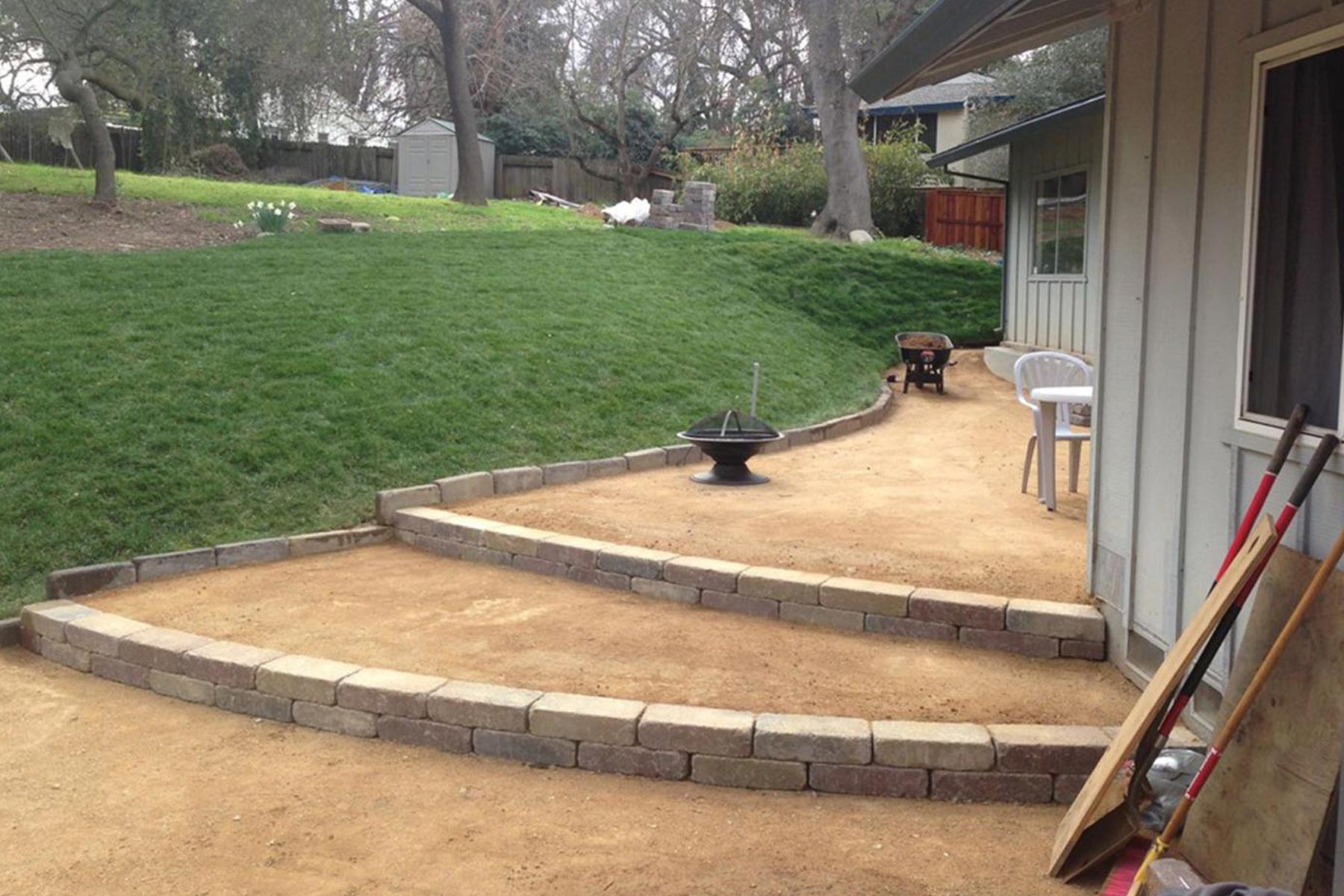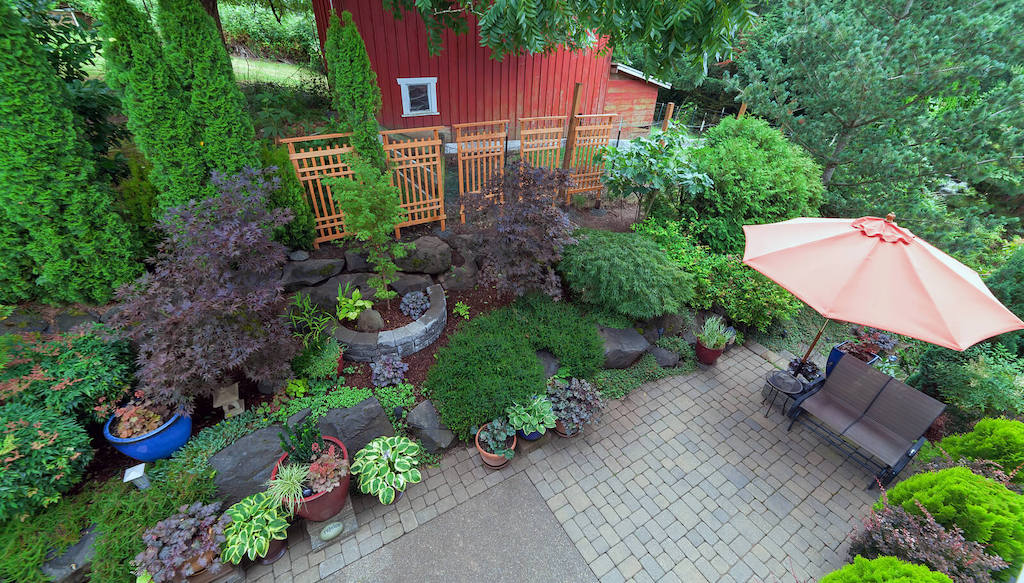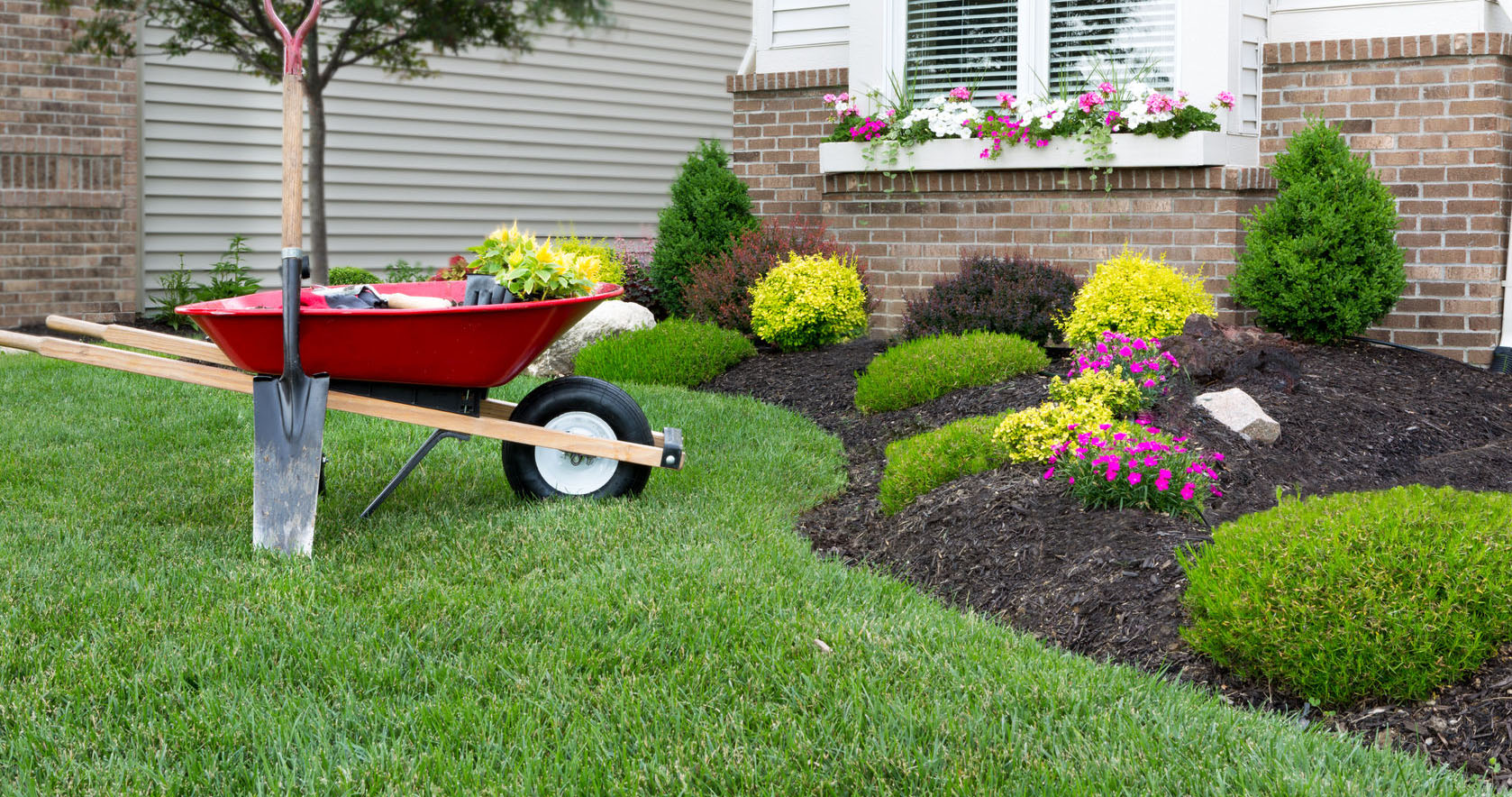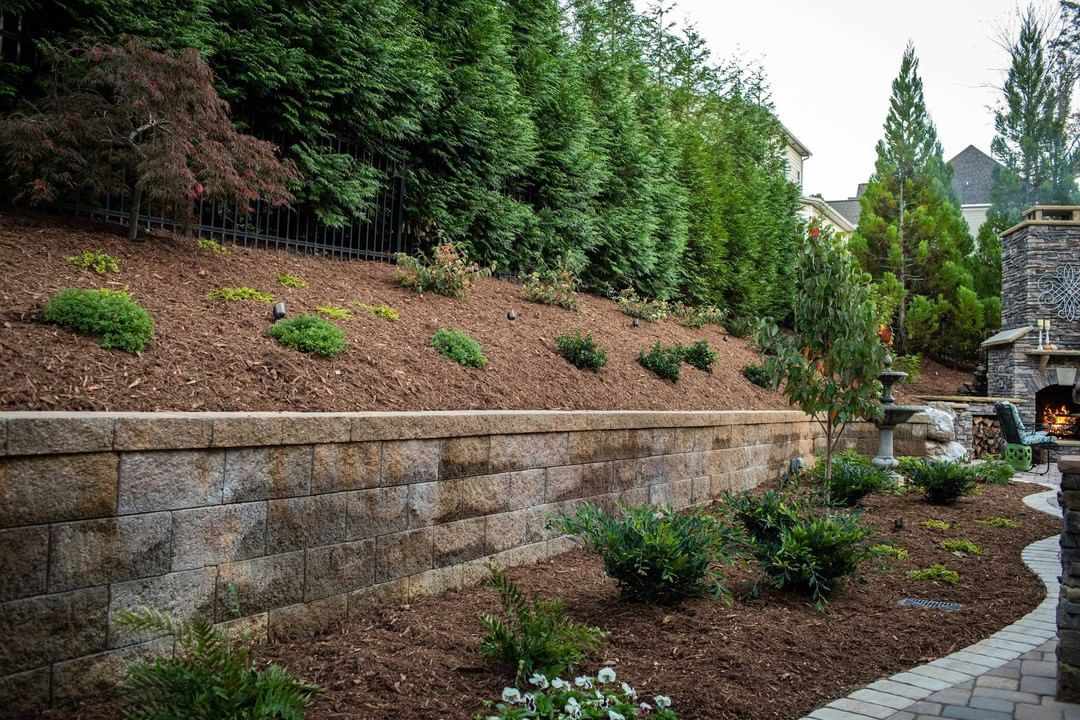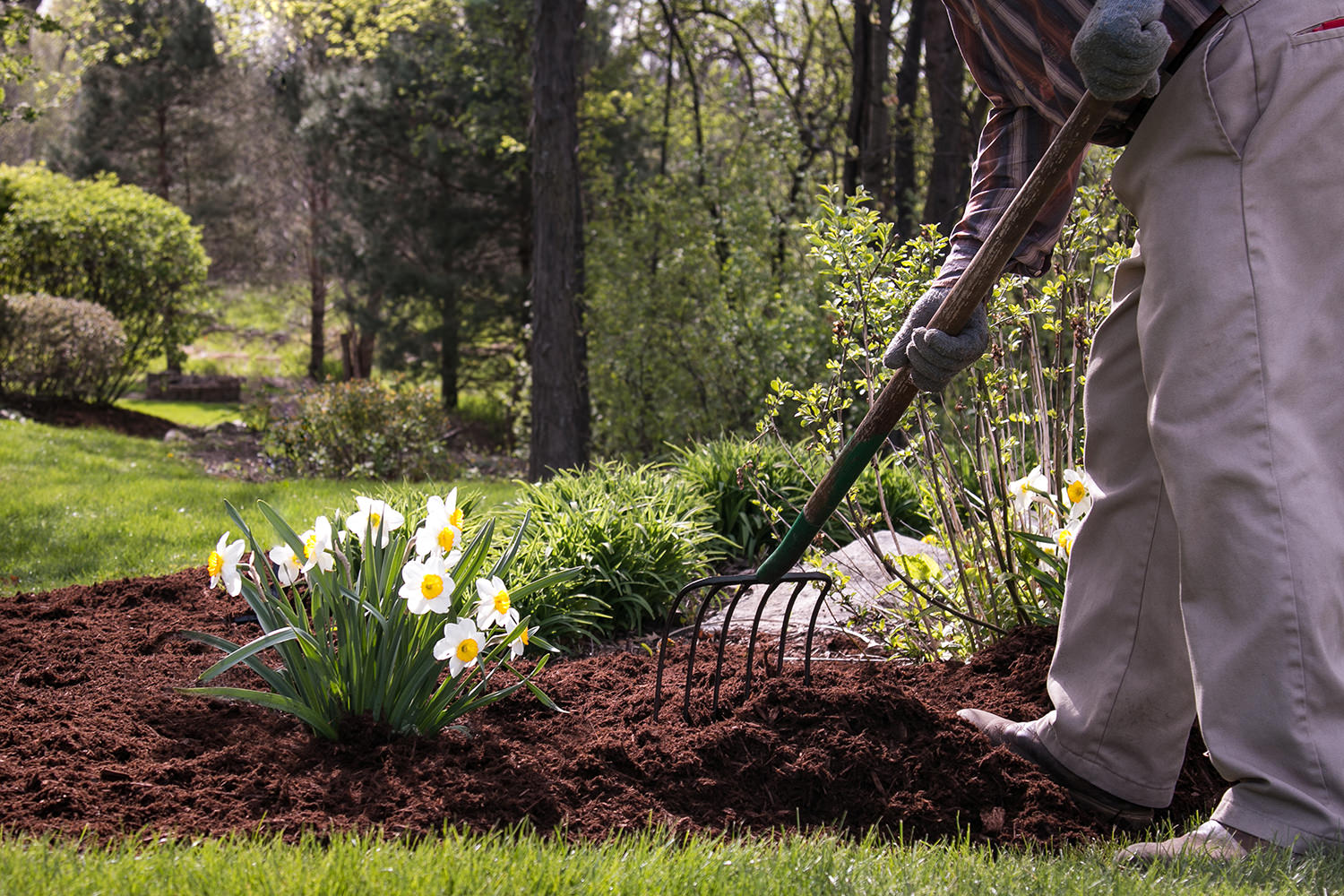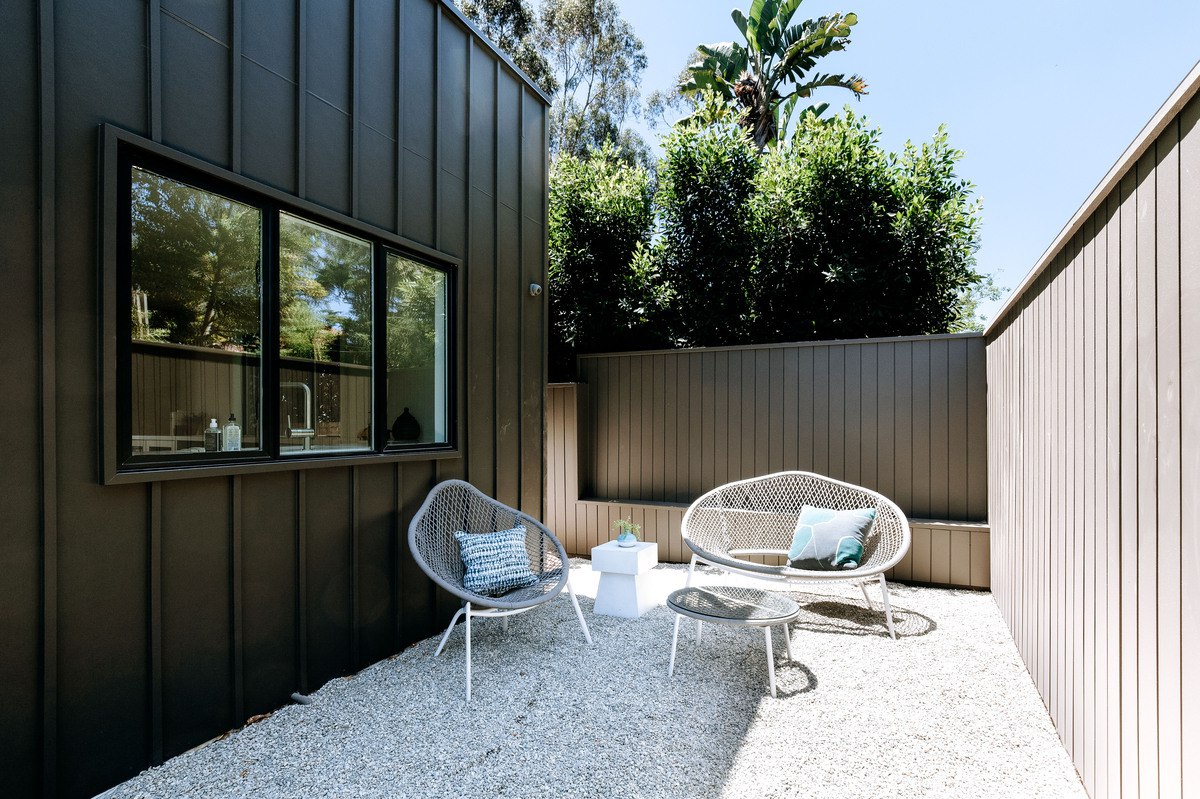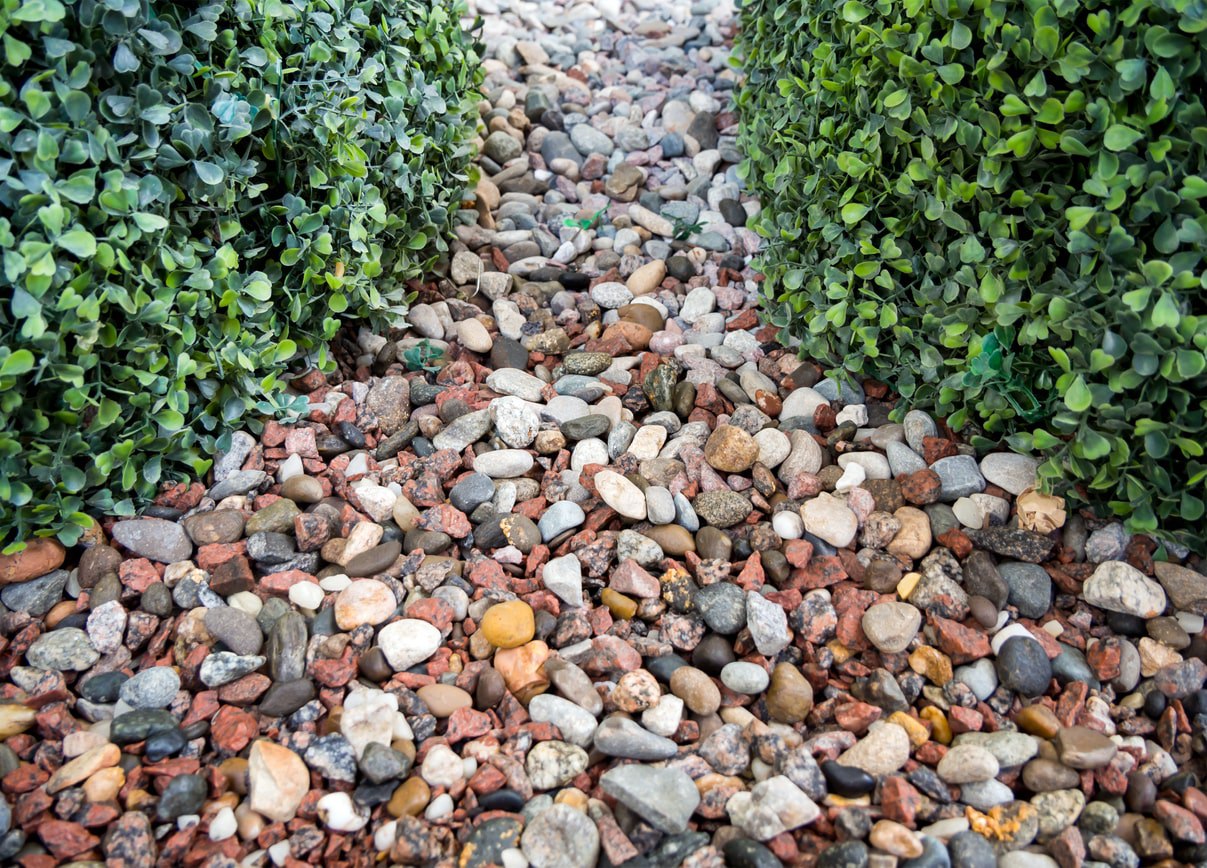Home>Gardening News and Trends>Latest News>What Category Is Landscaping
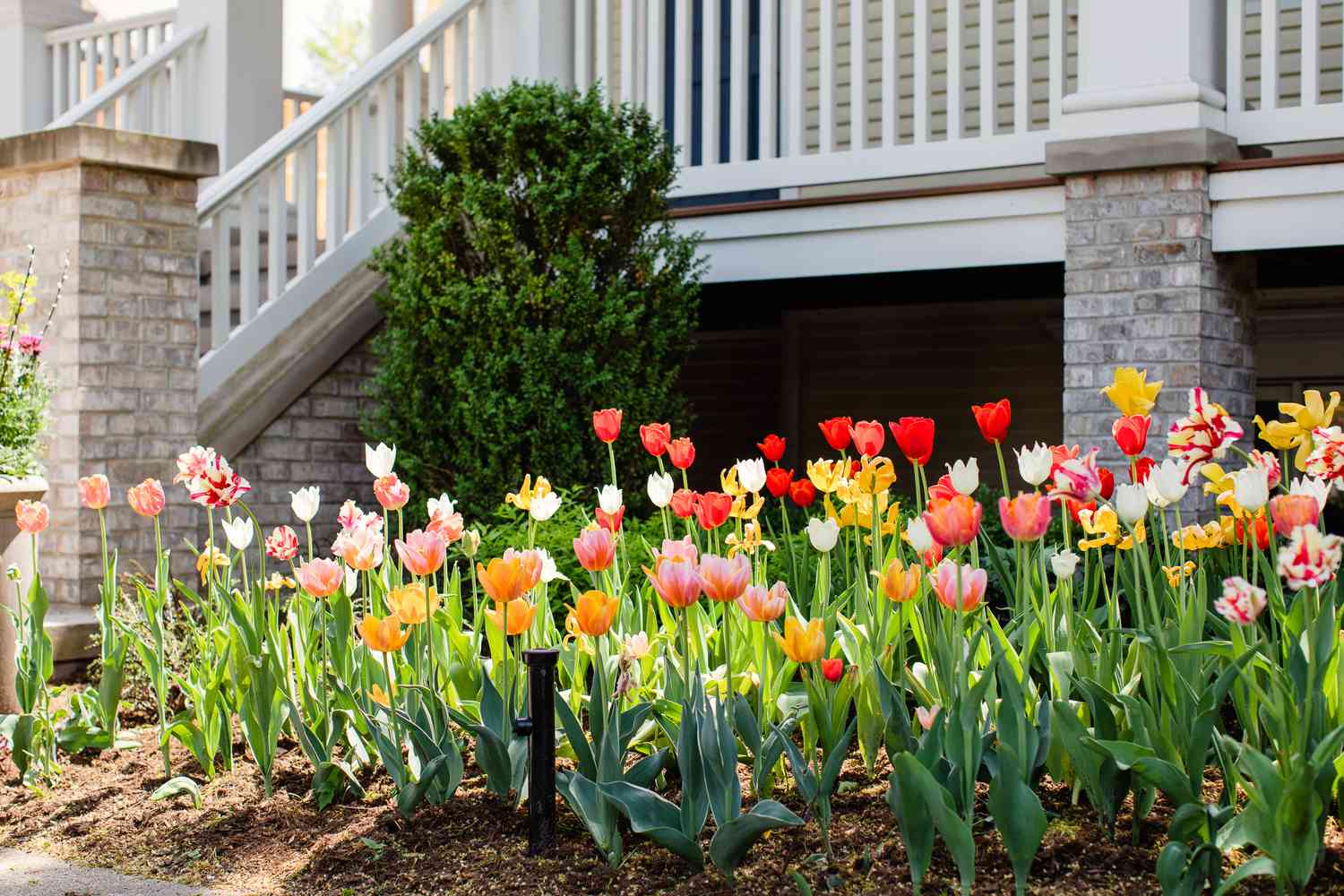

Latest News
What Category Is Landscaping
Modified: January 22, 2024
Looking for the Latest News on What Category Is Landscaping? Discover expert advice and trends to enhance your outdoor space.
(Many of the links in this article redirect to a specific reviewed product. Your purchase of these products through affiliate links helps to generate commission for Chicagolandgardening.com, at no extra cost. Learn more)
Table of Contents
Introduction
Welcome to the world of landscaping! Whether you’re a homeowner looking to beautify your outdoor space or a business owner seeking to create an inviting environment for customers, understanding the different categories of landscaping can help you make informed decisions and achieve your desired results. Landscaping goes beyond just planting flowers or mowing the lawn. It is an art that involves careful planning, design, and implementation to transform outdoor spaces into aesthetically pleasing and functional areas.
Landscaping is not limited to residential properties; it plays a crucial role in commercial and urban environments as well. From creating a serene oasis in your backyard to designing an impressive entrance for a corporate office, landscaping offers a plethora of possibilities. Additionally, environmental considerations have led to the rise of sustainable landscaping practices that not only enhance the aesthetic appeal but also contribute positively to the ecosystem.
In this article, we will delve into the various categories of landscaping, explore their unique characteristics, and highlight their importance. By understanding these categories, you will gain valuable insights into how landscaping can transform spaces, improve curb appeal, and create harmonious environments.
Definition of Landscaping
Landscaping can be defined as the practice of transforming outdoor spaces, such as gardens, yards, parks, or commercial areas, through the use of design principles, plant cultivation, construction, and maintenance. It is a combination of art and science that involves the careful arrangement and selection of plants, trees, shrubs, flowers, and other elements to create visually appealing and functional landscapes.
Landscaping encompasses a wide range of activities, including planning and designing the layout, selecting appropriate plant species, installing hardscapes like paths or patios, and ongoing maintenance to ensure the health and longevity of the landscape. It aims to create a harmonious balance between the natural environment and human-made elements, enhancing the aesthetics and functionality of the space.
The goal of landscaping is to create outdoor spaces that are not only visually pleasing but also serve a purpose. It involves considering factors such as topography, climate, soil conditions, and user requirements to create a landscape that meets both aesthetic and practical needs. Whether it is designing a peaceful retreat that encourages relaxation, establishing an inviting environment that attracts customers, or creating a sustainable green space that benefits the environment, landscaping offers endless possibilities for transformation.
Landscaping is a dynamic and evolving field, influenced by factors such as cultural preferences, architectural styles, and environmental considerations. It requires a creative eye, knowledge of plants and materials, and expertise in design principles to create landscapes that are not only visually stunning but also functional and sustainable.
Overall, landscaping is a multifaceted practice that involves the art of designing, the science of cultivation, and the skill of implementation. It is an essential aspect of creating beautiful and functional outdoor spaces, adding value to properties, and enhancing the quality of life.
Importance of Landscaping
Landscaping plays a crucial role in enhancing the visual appeal, functionality, and environmental sustainability of outdoor spaces. Whether it is a residential property, a commercial establishment, or an urban area, landscaping offers numerous benefits that positively impact both individuals and the surrounding community.
One of the primary benefits of landscaping is its ability to improve the overall aesthetics of a space. Well-designed landscapes incorporate a variety of plants, flowers, and hardscape elements that create an inviting and visually appealing environment. A beautifully landscaped property not only enhances the curb appeal but also provides a sense of pride for homeowners and business owners.
In addition to aesthetics, landscaping also contributes to the functionality of outdoor spaces. Through careful planning and design, landscapes can be transformed into versatile areas that cater to various activities. For homeowners, this may include the creation of outdoor entertaining spaces, relaxing retreats, or vegetable gardens. In commercial spaces, landscaping can be used to define walkways, seating areas, and recreational spaces, enhancing the overall customer experience.
Another significant aspect of landscaping is its impact on the environment. Sustainable landscaping practices aim to minimize the negative ecological effects and maximize the positive benefits. This includes the use of native plants that are well-adapted to the climate and require less water and maintenance. Incorporating water-saving irrigation systems, using organic fertilizers, and implementing proper waste management strategies are also essential components of environmentally friendly landscaping.
Landscaping can have a positive economic impact as well. A well-maintained and attractively landscaped property can significantly increase its value. Studies have shown that homes with beautiful landscapes can sell for higher prices and have a faster time on the market compared to properties without landscaping. Similarly, businesses with well-designed outdoor spaces are more likely to attract customers, boost their brand image, and ultimately increase their revenue.
Furthermore, landscaping has psychological and health benefits. Being in nature and surrounded by greenery has been proven to reduce stress levels, improve concentration, and promote overall well-being. Whether it’s enjoying a peaceful garden retreat or taking a stroll in a beautifully landscaped park, being in nature has a calming and rejuvenating effect on individuals.
In summary, landscaping is an essential practice that goes beyond aesthetics. It enhances the functionality of outdoor spaces, promotes environmental sustainability, adds value to properties, and improves the well-being of individuals. Whether it’s a small residential garden or a large commercial development, investing in landscaping can have a significant and positive impact on both the immediate surroundings and the community as a whole.
Categories of Landscaping
Landscaping can be broadly categorized into different types based on the purpose, location, and specific design elements employed. Understanding these categories can help individuals and businesses identify the most suitable approach for their landscaping needs. Here are some of the common categories of landscaping:
- Residential Landscaping: This category focuses on enhancing the outdoor spaces of residential properties. It includes creating visually appealing gardens, lawns, and other outdoor areas that complement the architecture of the house. Residential landscaping often aims to provide a tranquil retreat, functional outdoor living spaces, or even productive vegetable gardens.
- Commercial Landscaping: Commercial landscaping refers to the design and maintenance of outdoor areas surrounding commercial establishments such as offices, hotels, retail centers, and restaurants. This category emphasizes creating attractive and welcoming spaces that align with the brand image and purpose of the business. It often includes elements like well-manicured lawns, strategically placed signage, and outdoor seating areas.
- Urban Landscaping: This category focuses on improving the outdoor spaces in urban settings, such as parks, plazas, and streetscapes. Urban landscaping aims to create green spaces that enhance the quality of life in densely populated areas. It often involves the use of trees, plants, and hardscape elements to create shade, improve air quality, and provide recreational areas for residents and visitors.
- Environmental Landscaping: With the increasing emphasis on sustainability and conservation, environmental landscaping has gained prominence. This category focuses on creating landscapes that have a minimal impact on the environment and promote ecological balance. It includes practices such as using native plants, water-efficient irrigation systems, and incorporating sustainable materials. Environmental landscaping aims to preserve biodiversity, conserve water resources, and reduce waste and pollution.
- Specialized Landscaping: This category pertains to specific types of landscapes that require specialized knowledge and expertise. It includes areas such as rooftop gardens, water gardens, sports fields, and golf courses. Specialized landscaping often incorporates unique elements and techniques to meet the specific requirements of these spaces, such as drainage systems, specialized turf, or aquatic plant selections.
These categories of landscaping are not mutually exclusive, and often, a combination of approaches is employed to achieve the desired results. The choice of landscaping category depends on factors such as the purpose of the space, desired aesthetics, budget, and environmental considerations. By understanding these categories, individuals and businesses can better communicate their landscaping objectives and collaborate effectively with professional landscapers to create beautiful and functional outdoor spaces.
Residential Landscaping
Residential landscaping focuses on transforming the outdoor spaces of individual homes, creating appealing and functional landscapes that cater to the specific needs and preferences of homeowners. It encompasses a wide range of elements and design principles that can turn an ordinary yard into a beautiful and inviting oasis.
One of the main goals of residential landscaping is to enhance the curb appeal of a property. By carefully selecting and arranging a variety of plants, flowers, and hardscape elements, landscapers can create a visually stunning landscape that complements the architecture of the house. A well-designed front yard can make a memorable first impression and significantly increase the value of the property.
Additionally, residential landscaping aims to create outdoor living spaces that are both functional and aesthetically pleasing. This includes the design and installation of features such as patios, decks, and outdoor kitchens, which provide homeowners with areas for relaxation, entertainment, and dining. Cozy seating areas, fire pits, and water features can also be incorporated to create a peaceful and enjoyable outdoor retreat.
Another essential aspect of residential landscaping is the inclusion of sustainable and low-maintenance design elements. By selecting native plants that are well-adapted to the local climate and soil conditions, homeowners can create landscapes that require minimal water, fertilizers, and pesticides. Implementing efficient irrigation systems and using organic gardening practices can further reduce the environmental impact and upkeep requirements.
Residential landscaping also offers opportunities for homeowners to incorporate edible gardens into their outdoor spaces. From small vegetable patches to fruit trees and herb gardens, growing food at home not only provides fresh, organic produce but also adds an element of self-sufficiency and promotes a healthy lifestyle. Edible landscaping can be aesthetically pleasing as well, with creative plant combinations that are as visually appealing as they are productive.
Additionally, residential landscaping can be designed to address specific needs and challenges of the property. Sloping yards can be terraced to create multiple levels of planting areas, while privacy screens or fences can be installed to create a sense of seclusion. Child-friendly spaces with play areas and safe surfaces can be incorporated for families with young children, while pet-friendly landscapes can be designed to ensure the comfort and safety of pets.
Overall, residential landscaping offers an opportunity for homeowners to personalize and enhance their outdoor living spaces. From creating beautiful front yards to designing relaxing backyard retreats, residential landscaping aims to transform properties into functional, visually appealing, and environmentally sustainable spaces that homeowners can take pride in.
Commercial Landscaping
Commercial landscaping involves the design, installation, and maintenance of outdoor spaces surrounding commercial establishments such as offices, hotels, retail centers, and restaurants. The primary goal of commercial landscaping is to create visually appealing, welcoming, and functional landscapes that align with the brand image and purpose of the business.
One of the main focuses of commercial landscaping is to enhance the curb appeal of a property. An aesthetically pleasing and well-maintained landscape can attract customers, create a positive first impression, and differentiate a business from its competitors. Strategically placed signage, well-manicured lawns, colorful flower beds, and attractive hardscape features can contribute to a professional and inviting atmosphere.
Commercial landscaping also aims to create comfortable and functional outdoor spaces for employees and visitors. This includes the design and installation of amenities such as seating areas, walkways, and shaded areas. Well-designed outdoor spaces provide opportunities for relaxation, socialization, and collaboration, enhancing the overall experience of employees and customers.
In addition to aesthetics and functionality, commercial landscaping can contribute to corporate sustainability goals. By implementing sustainable landscaping practices and using eco-friendly materials, businesses can reduce their environmental impact and promote a greener image. These practices may include the use of native plants, water-efficient irrigation systems, rainwater harvesting, and the incorporation of green infrastructure elements like bioswales or vegetated rooftops.
Commercial landscaping can also reinforce a company’s branding and messaging. Customized plantings and landscape features can be used to reflect the values and identity of the business. For example, a company focused on sustainability might incorporate elements like solar panels or green walls into their landscape design, showcasing their commitment to the environment.
Furthermore, commercial landscaping can have a significant impact on employee morale and productivity. Well-designed outdoor spaces, such as landscaped courtyards or rooftop gardens, can provide employees with a pleasant environment for breaks, rejuvenation, and connections with nature. Research has shown that exposure to nature and green spaces can reduce stress levels, improve concentration, and enhance overall well-being.
Regular maintenance is crucial in commercial landscaping to ensure that the landscape remains attractive and functional throughout the year. Regular pruning, fertilizing, weed control, and irrigation system inspections are all necessary for the health and longevity of the landscape. Additionally, seasonal enhancements such as holiday decorations or flower rotations can add a touch of excitement and engagement for visitors.
Overall, commercial landscaping goes beyond aesthetics to create inviting, functional, and sustainable outdoor spaces for businesses. With careful planning, attention to detail, and ongoing maintenance, commercial landscapes can enhance the image of a business, improve employee morale, attract customers, and contribute to a positive overall experience.
Urban Landscaping
Urban landscaping focuses on enhancing the outdoor spaces in urban environments, such as parks, plazas, streetscapes, and rooftops. It aims to create green and sustainable areas within dense urban settings, providing residents and visitors with access to nature and promoting a higher quality of life.
One of the primary goals of urban landscaping is to create green spaces that serve as oases in the midst of concrete jungles. Parks and gardens provide opportunities for relaxation, recreation, and connection with nature. These green spaces act as important sanctuaries where people can escape the hustle and bustle of city life, engage in physical activity, or simply enjoy the beauty of the surroundings.
Urban landscaping also plays a crucial role in improving air quality and mitigating the urban heat island effect. Trees and plants act as natural air filters, absorbing pollutants and releasing oxygen. Strategically placed greenery can help cool down urban areas by providing shade and reducing heat radiation from paved surfaces, ultimately improving the overall comfort and livability of the city.
Furthermore, urban landscaping contributes to the overall aesthetic appeal of cities. Streetscapes adorned with trees, plantings, and flowers create a visually pleasing environment, making cities more attractive and enjoyable to live and work in. Landscape design elements like lighting, seating, and public art can also enhance the urban experience, creating vibrant and inviting spaces.
Urban landscaping is not limited to ground-level spaces – rooftops are increasingly being utilized as green spaces in urban areas. Rooftop gardens and green roofs provide numerous benefits, including insulation, stormwater management, and the creation of habitats for birds and insects. These green installations also offer opportunities for urban agriculture, allowing for the production of food in the heart of the city.
The importance of urban landscaping goes beyond aesthetics and environmental benefits. Studies have shown that access to green spaces in urban areas has a positive impact on mental health and overall well-being. Being in nature, even in a small urban park, can reduce stress levels, improve mood, and enhance cognitive function. The ability to connect with nature in an urban setting is crucial for the physical and mental health of city dwellers.
Public involvement in urban landscaping is essential for creating inclusive and sustainable green spaces. Engaging the community in the design and maintenance of these outdoor areas fosters a sense of ownership and pride. Urban landscaping projects can create jobs, foster social connections, and even contribute to education and community development initiatives.
Overall, urban landscaping is a vital aspect of city planning and design. By incorporating green spaces into urban environments, we can improve the livability, environmental sustainability, and overall well-being of residents. By providing accessible and inviting areas for people to connect with nature, urban landscaping transforms cities into healthier, more vibrant, and enjoyable places to live and work.
Environmental Landscaping
Environmental landscaping, also known as sustainable landscaping or eco-landscaping, focuses on creating landscapes that are harmonious with the natural environment and minimize negative ecological impacts. It involves using environmentally friendly practices to conserve resources, promote biodiversity, and enhance the overall health of ecosystems.
One of the fundamental principles of environmental landscaping is the use of native plants. Native plants are well-adapted to the local climate, soil conditions, and wildlife, requiring less water, fertilizers, and pesticides. By incorporating native species into landscapes, environmental landscaping promotes biodiversity and supports local wildlife populations, including birds, butterflies, and beneficial insects.
Water conservation is also a core component of environmental landscaping. Sustainable irrigation systems, such as drip or smart irrigation, minimize water waste by delivering water directly to the roots of plants. Additionally, rainwater harvesting can be integrated into the landscape design, capturing and storing rainwater for later use in irrigation. These practices reduce the strain on municipal water supplies and help mitigate the effects of drought.
Environmental landscaping incorporates the use of organic fertilizers and natural pest control methods to minimize the use of synthetic chemicals that can harm the environment. This includes composting, mulching, and the use of integrated pest management techniques, which prioritize the use of beneficial insects and natural predators to control pests.
In addition to plant choices and maintenance practices, environmental landscaping considers the use of sustainable materials for hardscaping elements such as paths, patios, and walls. Recycled and locally sourced materials, such as reclaimed wood or permeable pavers, help reduce the environmental impact associated with construction and contribute to the overall sustainability of the landscape.
Environmental landscaping also takes into account stormwater management. By incorporating green infrastructure elements such as rain gardens, bioswales, and green roofs, it helps capture and filter stormwater runoff, reducing the risk of flooding and minimizing water pollution. These features can also enhance the aesthetics of a landscape, creating visually appealing water features and attracting wildlife.
Furthermore, environmental landscaping prioritizes soil health. By promoting practices such as composting, proper soil amendment, and erosion control measures, it improves the quality of the soil and supports healthy plant growth. Healthy soils increase the ability of landscapes to absorb and retain water, improve nutrient cycling, and foster the growth of robust and resilient plants.
The benefits of environmental landscaping extend beyond the immediate landscape. By reducing water usage, minimizing the use of synthetic chemicals, and maintaining healthy ecosystems, environmental landscaping contributes to the overall health of the environment. It helps combat climate change, conserves resources, reduces pollution, and creates habitats for native wildlife.
In summary, environmental landscaping is a holistic approach that aims to create landscapes that are not only visually pleasing but also environmentally sustainable. By incorporating native plants, practicing water conservation, using organic methods, and considering sustainable materials, environmental landscaping preserves and enhances the natural environment, ultimately creating landscapes that support the health and well-being of both humans and the ecosystem.
Conclusion
Landscaping is a diverse and dynamic practice that encompasses a wide range of categories, each with its own unique characteristics and importance. From residential landscaping that transforms homes into beautiful retreats to commercial landscaping that enhances the image and functionality of businesses, the art of landscaping offers endless possibilities for creating visually appealing, functional, and sustainable outdoor spaces.
Understanding the different categories of landscaping helps individuals and businesses make informed decisions when it comes to designing and implementing their landscapes. Residential landscaping focuses on creating personalized and inviting outdoor spaces for homeowners, while commercial landscaping aims to create visually appealing and functional environments that attract customers and promote brand image.
Urban landscaping plays a vital role in bringing nature into densely populated areas, providing green spaces for relaxation and improving the overall well-being of city residents. Environmental landscaping goes beyond aesthetics, promoting sustainable practices, conserving resources, and supporting local ecosystems.
Regardless of the category, landscaping offers numerous benefits. It enhances the aesthetic appeal of properties, increases property value, and contributes to a sense of pride for homeowners and business owners. Landscaping also improves the functionality of outdoor spaces, creating areas for relaxation, socialization, and recreation.
Furthermore, landscaping plays a crucial role in promoting environmental sustainability. Through the use of sustainable practices, such as water conservation, native plantings, and organic techniques, we can minimize negative impacts on the environment, conserve resources, and support local ecosystems.
Whether it’s a residential garden, a corporate office entrance, a public park, or an urban rooftop garden, landscaping has the power to transform spaces and positively impact individuals and communities. It is an art that combines creativity, technical knowledge, and environmental consciousness, with the ultimate goal of creating beautiful, functional, and sustainable outdoor environments.
As we continue to appreciate the importance of connecting with nature and embracing sustainability, landscaping will continue to evolve and adapt, offering innovative and exciting approaches to create harmonious spaces that bring joy, beauty, and environmental benefits to our lives.
